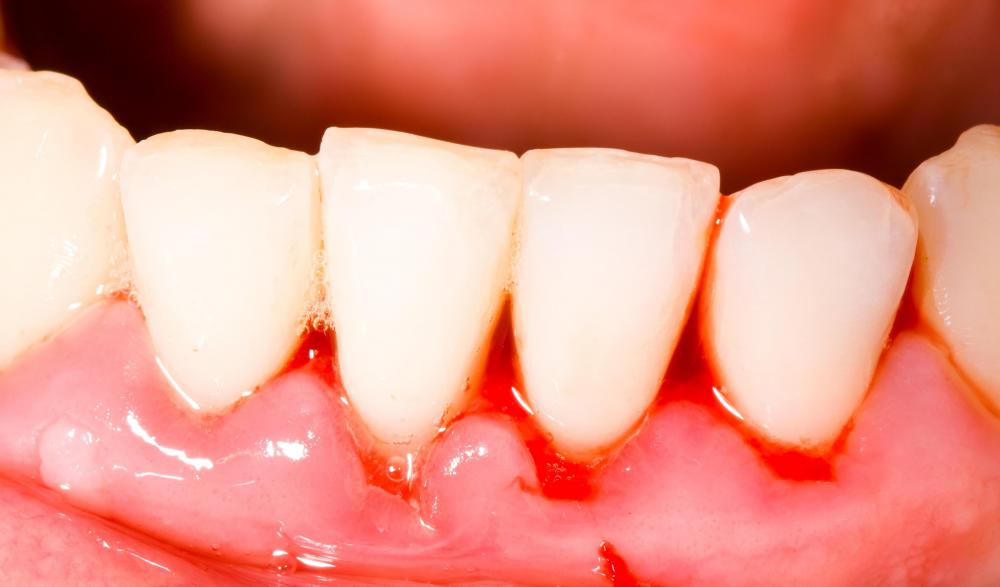At WiseGEEK, we're committed to delivering accurate, trustworthy information. Our expert-authored content is rigorously fact-checked and sourced from credible authorities. Discover how we uphold the highest standards in providing you with reliable knowledge.
How Do I Choose the Best Chlorhexidine Rinse?
At a low concentration, chlorhexidine rinse is used as a mouthwash to maintain or improve dental hygiene and has shown a significant ability to improve periodontal conditions such as bleeding gums, plaque build-up and gingivitis. Chlorhexidine rinses are antimicrobial solutions, so they also may be used in disinfectant solutions for contact lenses. The main factors to consider when you chose the best chlorhexidine rinse are taste, effectiveness and safety. The concentration of the active ingredient, chlorhexidine, is typically 0.12 percent.
The biggest complaint about chlorhexidine rinse may be the medicinal taste. Antiseptic mouthwash naturally has a strong taste because of the presence of alcohol in the ingredients. If you are using a product given to you by a dentist, the medicinal flavor and undesirable aftertaste may be something you have to live with, though there are products with flavoring included.

The foul taste also may temporarily change your taste perception, so finding a rinse that minimizes this effect may be preferable. Regardless of the rinse, experts have said this effect only lasts for a short period of time with no permanent change to the taste buds. Still, the best chlorhexidine rinses often have a bit of flavor added to take the edge off.

The concentration of the active ingredient tends to be similar among various antiseptics. Still, a dentist may recommend a specific, clinically proven chlorhexidine rinse for the treatment or prevention of periodontal disease. It is generally obtained with a prescription from a dentist.
A substantial amount of testing is conducted to show whether products containing chlorhexidine are effective. In terms of safety, the formulation should be clinically tested and proven safe, because chlorhexidine is known to be harmful in high concentrations. The concentration found in chlorhexidine rinse and other products containing the ingredient should be near 0.10 percent. It is formulated as a 0.12 percent weight-to-weight (w/w) mixture of chlorhexidine gluconate and purified water. Additional ingredients may include sorbitol, ethyl alcohol, hydroxyethylcellulose, citric acid and a flavor extract such as mint.

A common indication for prescription 0.12 percent w/w chlorhexidine rinse is for periodontal conditions and signs of periodontal disease. Research has proved the effectiveness, safety and significance of using the rinse as a mouthwash for treating bleeding gums, plaque and gingivitis. The typical treatment regimen involves rinsing the mouth with a 0.12 percent chlorhexidine rinse twice daily for 30 seconds over a six-week treatment period. After six weeks of treatment, signs of bleeding, plaque and gingivitis should have significantly improved.
AS FEATURED ON:
AS FEATURED ON:














Discuss this Article
Post your comments